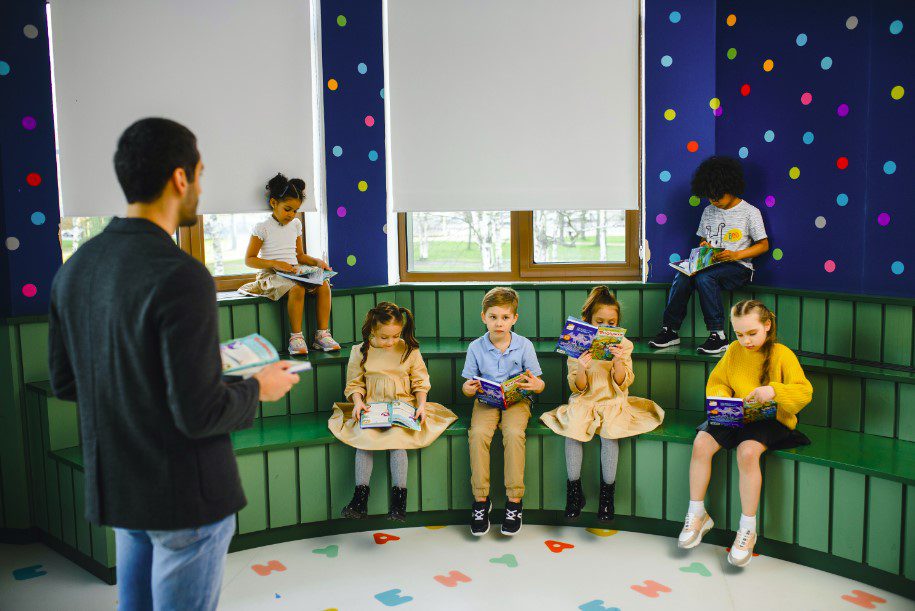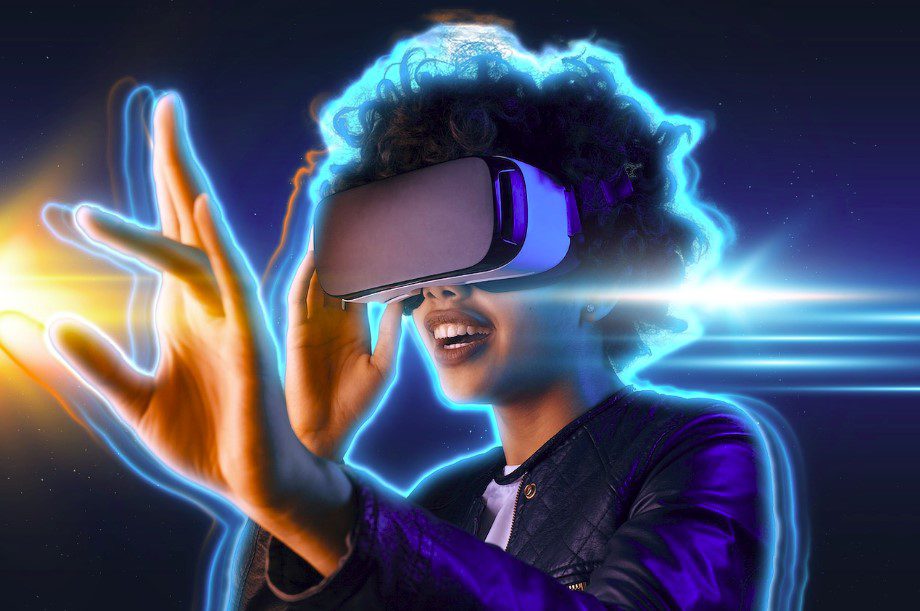For many centuries, storytelling has been part of human culture, and a tool for entertaining children and the community. It is an art that transcends time and connects people from different walks of life.
Whether it is an ancient myth, a classic novel, or a modern film, the art of storytelling has the power to shape our beliefs, family values, and children. When told eloquently, they captivate our imaginations, evoke emotions, and inspire action.
However, the way we tell stories has evolved significantly over time. This is particularly true in the digital age. The proliferation of smartphones, social media, virtual reality, and other digital mediums have introduced new dimensions to this art.
From Oral Tradition to Written Word

In the past, storytelling primarily involved sitting children around a fireplace or gathering them in a cozy corner, while the storyteller narrated imaginative tales. It required skilled storytellers who could engage their audience through vivid descriptions, compelling characters, and captivating narratives.
This culture was however to change, albeit slowly, in the 20th century – and for valid reasons.
Yes, oral tradition had its limitations. The reliance on human memory made it susceptible to errors and variations over time. Each retelling of a story or event introduced the potential for embellishment, omission, or distortion.
Moreover, the transmission of knowledge through oral means restricted its reach to those who could physically hear the storyteller.
The invention of writing systems revolutionized this by having stories recorded and preserved, for future generations. The written word made it possible to reach a wider audience and transcend the limitations of time and distance.
Epics, fables, and myths were transcribed onto scrolls and manuscripts, enabling stories to be shared across regions and even continents.
The advent of writing systems, such as cuneiform in Mesopotamia, hieroglyphs in ancient Egypt, and later the development of alphabets, revolutionized communication and how written content was stored.
Writing provided a standardized and durable method for recording information. It allowed for the preservation of historical events, the codification of laws, the sharing of scientific discoveries, and the dissemination of cultural and religious texts.
With writing, knowledge became independent of the limitations of human memory. It provided a reliable and accessible medium for future generations to learn from the past.
Written records enabled people to refer back to information, verify facts, and study texts at their own pace. It also facilitated the accumulation of knowledge, as new insights could be added to existing writings.
Digital Storytelling for Children: A New Way to Tell Stories

Nowadays, children are exposed to a multitude of media platforms and digital devices. To capture their attention, any form of storytelling must acknowledge and embrace these changes.
Storytelling today must incorporate elements that resonate with a tech-savvy generation, such as social media, streaming services, and online publishing.
1. Social Media Platforms
Social media platforms like Facebook, Instagram, Twitter, TikTok and Snapchat provide opportunities for individuals and brands to share stories through text, images, videos, and live broadcasts.
They have revolutionized storytelling by providing these opportunities:
- Visual storytelling
- Micro storytelling
- Real-time updates
- User-generated content
- Personal branding
- Multimedia integration
- Audience engagement.
Stories on these platforms often follow a chronological sequence, to allow users to share their experiences and narratives in real-time.
2. Blogs and Websites
Blogging platforms and personal websites continue to be popular mediums for digital storytelling. Bloggers and content creators can publish articles, personal narratives, and multimedia content to engage with their audience.
Websites can incorporate interactive elements, such as animations, quizzes, and user-generated content, to enhance the storytelling experience.
Unlike social media platforms with limited character counts, blogs and websites provide ample space to go deep into details and explore narratives in a more extensive manner.
They provide a robust platform for storytelling by offering long format writing, narrative control, multimedia integration, and community building.
3. Video Sharing Platforms
Video sharing platforms like YouTube, Vimeo, Dailymotion, Facebook Watch, Instagram, IGTV, TikTok, and Snapchat provide opportunities for content creators to share storytelling content with a wide audience.
These platforms offer various features and audience demographics, allowing creators to choose the one that aligns with their storytelling goals.
Video storytelling can take the form of vlogs, short films, documentaries, animations, and tutorials.
The visual and auditory nature of videos allows for immersive storytelling experiences.
4. Podcasts
A podcast is a digital audio or video program that is distributed through the internet for on-demand streaming or downloading. It typically consists of a series of episodes on various topics, such as news, entertainment, education, storytelling, interviews, or discussions.
Listeners can access podcasts through dedicated podcast platforms or apps, allowing them to listen at their convenience, whether on a computer, smartphone, or other portable devices.
Podcasts have gained popularity as a versatile and accessible medium for content creators to share their ideas, stories, and expertise with a global audience.
With the rise of on-demand audio content, podcasting offers a unique and intimate way to engage listeners through storytelling.
5. Interactive Storytelling
Interactive storytelling is a form of storytelling that actively involves the audience or chilldren in shaping the narrative’s direction and outcome.
Unlike traditional storytelling, where the storyteller presents a fixed sequence of events, interactive storytelling allows the audience to make choices, decisions, or contributions that influence the story’s development.
This can be through choose-your-own-adventure style narratives, branching storylines, or gamified storytelling experiences.
With gamification elements and multimedia integration, these platforms create engaging and immersive narrative experiences that empower users to actively participate in shaping the story.
In interactive storytelling, the audience becomes an integral part of the narrative, often assuming the role of a character or making decisions on behalf of characters in the story. These decisions can lead to different plotlines, multiple endings, or unique experiences.
Various mediums can be used for interactive storytelling. They include books, video games, websites, virtual reality experiences, and live performances.
The Future of Storytelling

With the advent of technology and the rise of social media, the way we consume and engage with stories has undergone a profound transformation.
The future lies in embracing interactive narratives that allow children to actively participate and shape the outcome. Interactive storytelling techniques, such as branching narratives and choose-your-own-adventure formats, empower them to become part of the story.
Even more is expected:
1. Immersive Experiences via Virtual Reality (VR)
Virtual Reality (VR) has emerged as a game-changer in the realm of storytelling. By transporting users to virtual worlds, VR technology offers immersive experiences that blur the line between reality and fiction.
Whether it’s exploring ancient civilizations, embarking on thrilling adventures, or witnessing historical events firsthand, VR allows audiences to step into the shoes of the protagonist and experience narratives in an unprecedented way.
2. Augmented Reality (AR)
Augmented Reality (AR) blends the digital and physical worlds, enhancing storytelling with captivating visual overlays for children. By overlaying virtual elements onto the real world, AR enables brands to create interactive and immersive experiences that capture attention and leave a lasting impression.
For example:
Imagine you are walking through a park, and you come across a sign inviting you to experience a magical adventure. Curious, you take out your smartphone and open an augmented reality (AR) storytelling app. As you point your phone’s camera at the sign, the world around you transforms before your eyes.
Suddenly, the park becomes a mystical realm, and a fantastical character, like a fairy or a wizard, appears on your phone’s screen. They introduce themselves as the guide to your adventure and invite you to follow them on a quest.
As you walk along the designated path, more AR elements are integrated into the environment. You may encounter virtual creatures like dragons, talking animals, or mythical beings that interact with you.
The character on your screen provides narration and asks you to make choices at certain points in the story, such as deciding which direction to take or solving puzzles to progress.
Whether it’s gamifying storytelling or providing additional context and information, AR offers endless possibilities for engaging audiences in unique and memorable ways.
3. Personalization and Tailored Content
In an era of information overload, personalization is key to cutting through the noise and capturing audience attention. Advanced data analytics and artificial intelligence enable content creators to deliver tailored experiences based on individual preferences and interests.
By crafting stories that cater to individual preferences and interests, storytellers can capture the attention of children more effectively. Personalized content resonates with them on a deeper level, fostering a stronger emotional connection and keeping them engaged throughout the narrative.
By understanding the unique needs of their target audience, businesses can craft personalized stories that resonate deeply, fostering a sense of connection and relevance.
4. Leveraging Social Media Platforms
Social media platforms offer a wide range of tools and features that can be used creatively to share stories and engage with children in an interactive and entertaining way.
These platforms have become the digital playgrounds for storytelling. From bite-sized content on platforms like Instagram and TikTok to longer narratives on YouTube and Facebook, leveraging these platforms is essential for engaging with diverse audiences.
Parents can use visuals, live videos, and collaborative storytelling to engage kids. Story highlights, text posts, and hashtags help build a library of tales. Parents can also join storytelling communities for inspiration and discover new stories. They should prioritize online safety and privacy while involving children in social media storytelling activities.
Brands and individuals can harness the power of social media algorithms, trends, and influencers to amplify their stories and reach a wider audience.
5. The Role of Artificial Intelligence (AI)
Artificial Intelligence (AI) is revolutionizing storytelling for children by enabling automated content creation, personalization, and even generating narratives. AI-powered tools can analyze vast amounts of data, identify patterns, and create compelling stories tailored to specific audiences.
For example, ChatGPT, a sample AI tool, is a powerful language model that can generate text stories based on the prompts and inputs it receives. With proper guidance and interaction, parents can use ChatGPT to co-create imaginative and engaging stories for their children.
While AI can enhance efficiency and provide valuable insights, it’s essential to strike a balance between automation and human creativity to maintain authenticity and emotional resonance.

The Last Word
The future of storytelling for children will be driven by advancements in technology. They promise to offer immersive virtual reality and augmented reality experiences.
Elsewhere, personalization and customization will cater to individual interests and learning styles, while interactive storytelling apps and games will promote critical thinking.
Furthermore, AI-powered systems will create dynamic narratives based on children’s interactions.





Leave a Reply